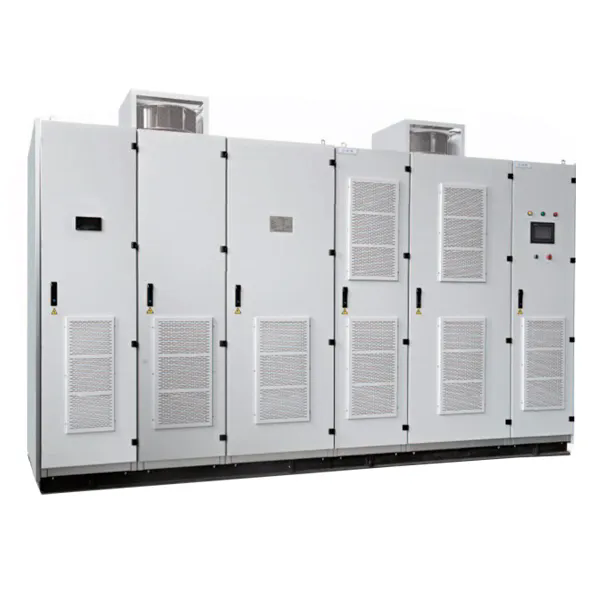High Voltage and Medium Voltage Frequency Inverters: Powering the Future of Electrical Systems
2024-09-10
In the realm of electrical engineering and industrial automation, frequency inverters—also known as variable frequency drives (VFDs)—play a crucial role in managing and controlling electric motors. They are instrumental in optimizing the performance and efficiency of motors across various voltage levels. This blog will delve into high voltage and medium voltage frequency inverters, exploring their functions, benefits, and applications in modern electrical systems.
What Are Frequency Inverters?
A frequency inverter is an electronic device that regulates the speed and torque of an electric motor by varying the frequency of the electrical supply. By adjusting the frequency, the inverter controls the motor’s speed and, consequently, the performance of machinery and equipment. Frequency inverters are essential for applications that require precise control over motor operations, energy savings, and process optimization.
High Voltage vs. Medium Voltage Frequency Inverters
High voltage frequency inverters and medium voltage frequency inverters differ primarily in the voltage levels they handle and the applications they serve. Understanding these differences is crucial for selecting the right inverter for specific needs.
High Voltage Frequency Inverters
1. Voltage Range: High voltage frequency inverters typically operate at voltages above 1,000 volts, ranging from 3 kV to 12 kV or higher. They are designed to handle large-scale industrial applications where high power is required.
2. Applications: These inverters are used in large industrial processes, such as steel production, cement manufacturing, and water treatment plants. They power large motors and heavy machinery, providing precise control and energy efficiency in demanding environments.
3. Benefits:
- Enhanced Power Handling: High voltage inverters can manage significant power loads, making them suitable for high-demand applications.
- Energy Efficiency: By optimizing motor performance, high voltage inverters contribute to energy savings and reduced operational costs.
- Improved Control: They offer advanced control features, including torque and speed regulation, which enhance the overall efficiency of industrial processes.
4. Challenges:
- Complexity: High voltage inverters are complex and require careful installation and maintenance.
- Cost: Due to their advanced technology and high power handling capabilities, they can be more expensive than medium voltage inverters.
Medium Voltage Frequency Inverters
1. Voltage Range: Medium voltage frequency inverters operate at voltages between 600 volts and 1,000 volts. They are designed for applications that require moderate power levels and provide a balance between performance and cost.
2. Applications: These inverters are commonly used in applications such as HVAC systems, pumps, and smaller industrial processes. They are also used in commercial buildings and infrastructure projects where medium power is needed.
3. Benefits:
- Versatility: Medium voltage inverters are versatile and can be used in a variety of applications, from commercial to industrial settings.
- Cost-Effectiveness: They offer a more affordable option compared to high voltage inverters while still providing efficient motor control.
- Ease of Installation: Medium voltage inverters are generally easier to install and maintain than their high voltage counterparts.
4. Challenges:
- Power Limitations: Medium voltage inverters are not suitable for extremely high power applications, which limits their use in some heavy industries.
Advantages of Frequency Inverters
Whether high or medium voltage, frequency inverters offer several key advantages:
1. Energy Savings: By adjusting the motor speed to match the load requirements, frequency inverters reduce energy consumption and operational costs. This is particularly beneficial in applications with varying load conditions.
2. Improved Process Control: Frequency inverters provide precise control over motor speed and torque, enabling more accurate and efficient operation of machinery and processes.
3. Extended Equipment Life: By reducing the mechanical stress on motors and components, frequency inverters help extend the lifespan of equipment, reducing the need for maintenance and replacements.
4. Reduced Mechanical Wear: Soft-start and soft-stop features of frequency inverters minimize the impact on mechanical systems, reducing wear and tear on belts, gears, and other components.
5. Enhanced System Performance: Frequency inverters can improve overall system performance by optimizing motor operations, leading to better productivity and reliability.
Emerging Trends and Innovations
As technology advances, frequency inverters are evolving to meet new demands and enhance performance:
1. Integration with IoT: The integration of frequency inverters with Internet of Things (IoT) technology allows for remote monitoring and control, providing real-time data on system performance and enabling predictive maintenance.
2. Advanced Control Algorithms: Innovations in control algorithms enhance the precision and efficiency of frequency inverters, improving their ability to handle complex and dynamic load conditions.
3. Compact and Modular Designs: Advances in design are leading to more compact and modular frequency inverters, making them easier to install and integrate into existing systems.
4. Enhanced Efficiency: Ongoing research and development are focused on improving the energy efficiency of frequency inverters, further reducing operational costs and environmental impact.
Conclusion
High voltage and medium voltage frequency inverters are vital components in modern electrical systems, offering precision, efficiency, and energy savings for a wide range of applications. Understanding the differences between high and medium voltage inverters helps in selecting the right solution for specific needs, whether for large-scale industrial processes or more moderate power applications.
As technology continues to advance, frequency inverters will play an increasingly important role in optimizing motor performance, enhancing system efficiency, and contributing to sustainable practices in various industries. Whether you're involved in industrial automation, commercial building management, or infrastructure development, frequency inverters offer the control and efficiency needed to power the future of electrical systems.



